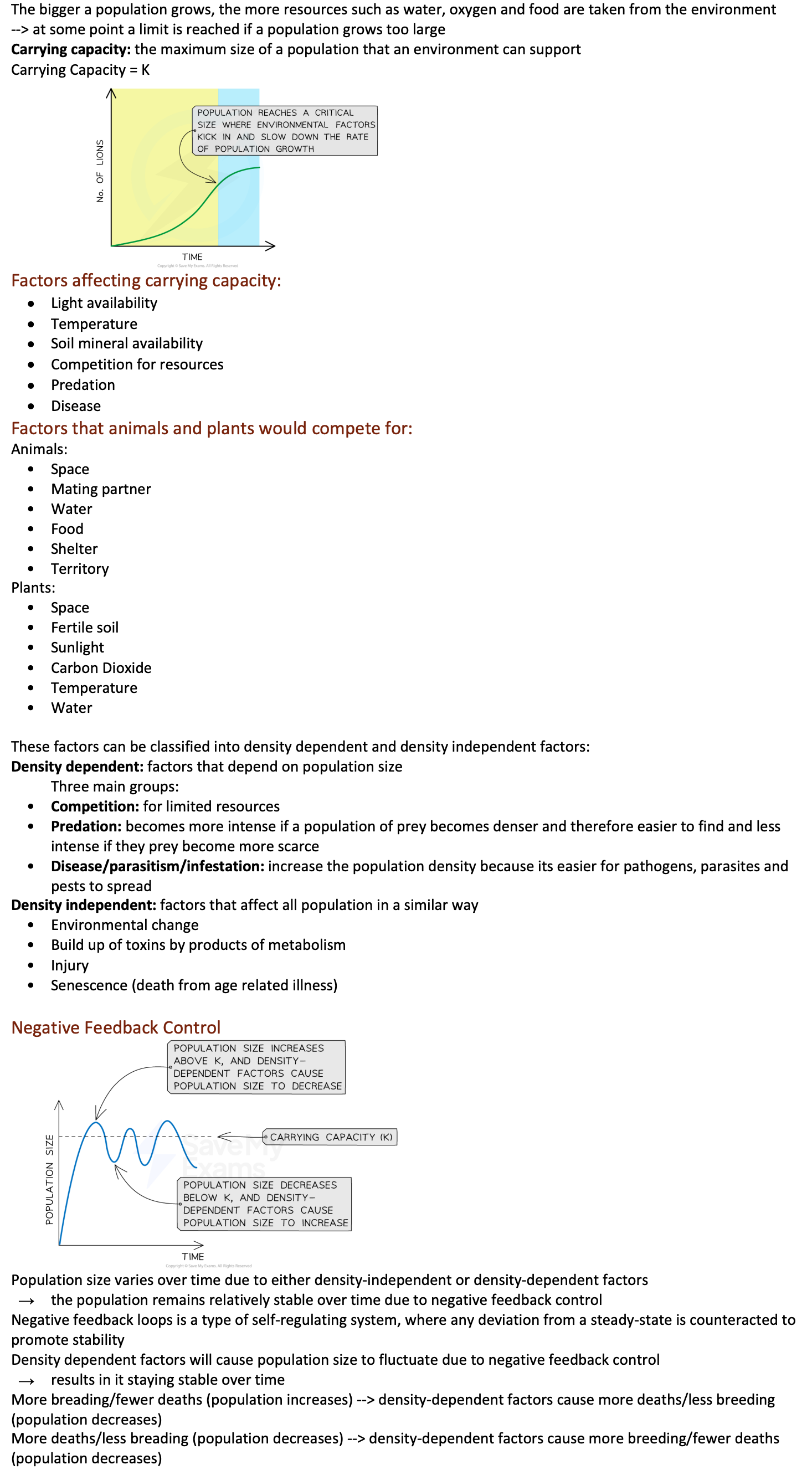Limiting Population Size
The bigger a population grows, the more resources such as water, oxygen and food are taken from the environment
--> at some point a limit is reached if a population grows too large
Carrying capacity: the maximum size of a population that an environment can support
Carrying Capacity = K
Factors affecting carrying capacity:
Light availability
Temperature
Soil mineral availability
Competition for resources
Predation
Disease
Factors that animals and plants would compete for:
Animals:
Space
Mating partner
Water
Food
Shelter
Territory
Plants:
Space
Fertile soil
Sunlight
Carbon Dioxide
Temperature
Water
These factors can be classified into density dependent and density independent factors:
Density dependent: factors that depend on population size
Three main groups:
Competition: for limited resources
Predation: becomes more intense if a population of prey becomes denser and therefore easier to find and less intense if they prey become more scarce
Disease/parasitism/infestation: increase the population density because its easier for pathogens, parasites and pests to spread
Density independent: factors that affect all population in a similar way
Environmental change
Build up of toxins by products of metabolism
Injury
Senescence (death from age related illness)
Negative Feedback Control
Population size varies over time due to either density-independent or density-dependent factors
the population remains relatively stable over time due to negative feedback control
Negative feedback loops is a type of self-regulating system, where any deviation from a steady-state is counteracted to promote stability
Density dependent factors will cause population size to fluctuate due to negative feedback control
results in it staying stable over time
More breading/fewer deaths (population increases) --> density-dependent factors cause more deaths/less breeding (population decreases)
More deaths/less breading (population decreases) --> density-dependent factors cause more breeding/fewer deaths (population decreases)
